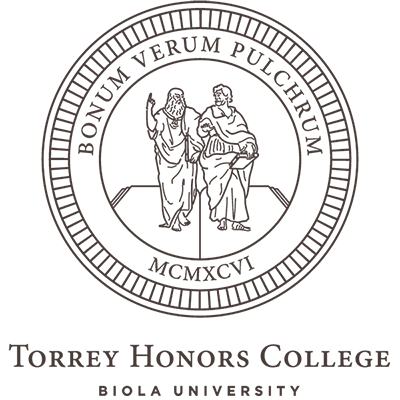A scene from the Leben der heiligen Altväter (1482)
The Nicene Line as Structural Principle for Christian Doctrine
International Journal of Systematic Theology 27:4 (Oct 2025), 464-479.
For the 1700th anniversary of the council of Nicaea, the International Journal of Systematic Theology has published a set of articles on the theology of Nicaea as an element in contemporary theology. My contribution explains how the main principles articulated in the Nicene Creed continue to be guidelines for Christian doctrine overall; my explanation is from an evangelical perspective, with special interest in the relation of the doctrine of God to the doctrine of salvation. Here’s the abstract and first couple of pages. For the complete article, find it at the IJST site.
Abstract: Nicaea (both the 325 council and the creed that by 381 perfected its work) instantiates a structural principle for Christian doctrine, a principle called here the Nicene line. Its influence is evident in the main contours of doctrine, and it exerts continuing guidance for the teaching and research of individual theologians. The line that Nicaea draws is clearest in the second article of the Nicene Creed, which establishes the Son’s particular filial identity with reference to his eternal relation to the Father before narrating his economic action of creation and of incarnation ‘for us and our salvation’. Construing the events of the New Testament as the disclosure of divine sonship, Nicaea thus draws a line between God and creation, locating the blessed Trinity above the line precisely in order to describe the divine work of transformatively blessing creatures below the line. This principle is classically elaborated in pro-Nicene theologies (illustrated here by Theodoret of Cyrrhus), and is already evident in Scripture (illustrated here by the argument of Ephesians).
John Webster once characterized the crucial turn in his theological development as a pivot from ‘doctrinal criticism’, in which the main scholarly task seemed to be ‘critical dissection of one or another problematic bit’ of Christian belief (followed if possible by some nimble reconstruction) to a kind of rigorous ‘conceptual unfolding’ or descriptive exposition of the principles of the faith. He implemented this decision ‘to teach confessionally’ in his classroom labors:
I resolved to structure the content of my teaching in accordance with the intellectual and spiritual logic of the Christian confession as it finds expression in the classical creeds, to allow that structure to stand and to explicate itself, and not to press the material into some other format. Thus my survey of Christian doctrine was (and remains) simply a conceptual expansion of the Apostles’ Creed as a guide to the Gospel that is set out in Holy Scripture. Once I resolved to work in this way, I quite quickly found that the substance and order of Christian doctrine displayed itself as much more grand, and much more comprehensible, than when I had approached it as a series of critical problems. (footnote 1)
Beyond the classroom, Webster went on to recognize that the major task of writing constructive theology was ‘to understand and think through the categories of classical dogmatics in their totality and their interrelations—to acquire a proper grasp of the architecture of dogmatics and to see its shape as the science of the Church’s confession’.(footnote 2) Among other modulations of theological mood (some peculiar to Webster’s location and project, but some of abiding value and highly transferable to other projects), the work of expositing the Christian creed meant exercising a preferential option for holism, for giving steady attention not to a series of isolated elements but to the main principles and overall structure of theology.
The programmatic intention to allow classic, creedal doctrine ‘to stand and to explicate itself’ does not necessarily dictate in advance that every faithful theological undertaking will have the same three-point outline, the same foreordained table of contents, or the same sequence of considerations taken up in traditional order. But a contemporary theology animated by the creedal impulse might instead do its work by abstracting the principles, tensions, dynamisms, and strategies of classic creeds rather than simply working down through the traditional elements seriatim. Such an indirect procedure might even underwrite greater fidelity to the creeds themselves. It offers a way for contemporary theologians to shift their habitual attention away from mere rehearsal of items on a list, without giving in to the temptation to let their theological attention simply wander away at large. Theologians today might instead let the substance of the Christian confession explicate itself by formulating and propagating the underlying forces that generated its patterns initially. Even when (as is nearly inevitable in traditional and conservatising agendas) the set of resulting theological topics continue to assert themselves in more or less the predictable dogmatic order, they will fall into those positions afresh, arranged with a deeper understanding and with greater theological self-awareness.
In what follows I attend to the most important of those underlying principles, called here the Nicene line. I argue that the Nicene Creed gives guidance for the work of Christian theology at the deepest level of significant form and therefore at the highest level of structural organization. Even more definitively than the Apostles’ Creed, (footnote 3) the Nicene Creed governs Christian doctrine and shapes the overall proportions of theology, because to a much greater extent than any earlier credal expression, Nicaea’s polemical origin gave it a certain fully alert incisiveness. This Nicene impulse was impressively put in place already by the work of the Council of Nicaea in 325, such that even the briefer creed of 325 would serve quite well for the kind of exposition this essay undertakes. All the major conceptual moves are already epochally articulated there. (footnote 4) But the formative impulse of 325 was perfected in the Nicene Creed of 381, which is the text that has achieved classic status in Christian history.
 Fred Sanders
Fred Sanders

